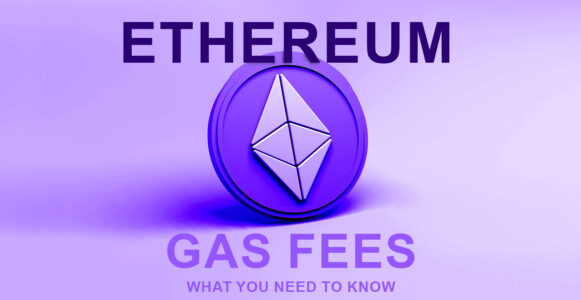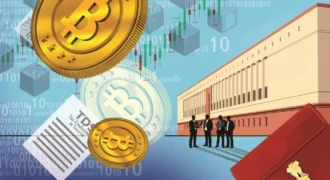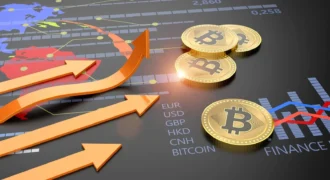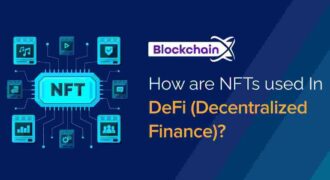Ethereum is not just the second-largest cryptocurrency by market capitalization — it’s the backbone of decentralized finance (DeFi), NFTs, and Web3 applications. But behind the headlines of price surges and blockchain innovation lies a critical factor that directly impacts user experience, developer activity, and investor behavior: gas fees.
Understanding Ethereum’s gas fees, network activity, and their broader implications is essential for investors aiming to navigate the ecosystem efficiently. These dynamics influence adoption, transaction costs, market sentiment, and even altcoin performance.
What Are Gas Fees?
Gas fees are the transaction costs required to execute operations on the Ethereum blockchain. Unlike Bitcoin, where miners primarily validate transfers of value, Ethereum’s network executes complex smart contracts, decentralized applications (dApps), and DeFi protocols.
Key points about gas fees:
- Payment to Miners/Validators: Gas fees compensate network validators for computing and verifying transactions.
- Measured in Gwei: Gas fees are denominated in Gwei, a fraction of ETH (1 ETH = 1,000,000,000 Gwei).
- Variable Costs: Fees fluctuate based on network demand; high congestion drives fees up, while low activity reduces costs.
High gas fees often spark debate among investors and developers alike, as they directly influence transaction efficiency, adoption, and investor sentiment.
Factors Driving Ethereum Gas Fees
Gas fees are dynamic and influenced by multiple factors:
- Network Congestion
During periods of high demand, such as NFT drops or DeFi yield events, the number of pending transactions increases. Validators prioritize transactions with higher fees, pushing the average gas cost upward. - Complexity of Smart Contracts
Executing a simple ETH transfer requires minimal gas, but interacting with complex smart contracts — like DeFi lending protocols or NFT minting — consumes more computational resources, raising the associated cost. - Network Upgrades and Scaling Solutions
Ethereum’s transition to Ethereum 2.0 and the integration of Layer-2 scaling solutions like Polygon and Arbitrum aim to reduce congestion and gas fees, improving usability and investor confidence. - Market Sentiment and Speculation
Bullish periods often coincide with increased network activity, indirectly inflating gas fees as users compete to execute transactions quickly.
Why Gas Fees Matter to Investors
High gas fees have a ripple effect throughout the crypto ecosystem. Here’s why they matter:
- Transaction Costs Impact ROI
Investors in DeFi protocols or NFT markets must consider fees when calculating returns. High gas costs can erode profits, especially for small-scale traders. - Influences Token Adoption
If transaction costs are prohibitive, users may migrate to alternative blockchains or Layer-2 solutions, reducing demand for ETH and related DeFi tokens. - Network Activity Signals Health
Gas fees can be an indirect measure of network utilization. Rising fees often indicate strong adoption, but sustained high costs may also signal inefficiencies. - Investment Timing and Strategy
Understanding gas fee trends allows investors to optimize transaction timing. Tools that monitor network congestion and predict gas prices can save capital and enhance efficiency.
Ethereum Network Activity: Key Metrics
To assess Ethereum’s market health and investment potential, investors must examine network activity alongside gas fees. Critical metrics include:
- Number of Active Addresses
A growing number of active addresses indicates rising adoption and engagement with dApps, DeFi platforms, and NFTs. - Transaction Volume
Total daily transactions reflect ecosystem activity and investor confidence. High volume often correlates with increased gas fees, but it also signals robust adoption. - DeFi and NFT Participation
The number of smart contracts and dApps deployed, along with user interaction metrics, highlights Ethereum’s real-world utility. - Validator Participation
The number of Ethereum validators post-ETH 2.0 reflects network security and decentralization, impacting investor trust.
Gas Fees and Market Behavior: An Analytical Perspective
Gas fees don’t just affect technical operations — they shape investor psychology and market trends:
- High Fees as a Barrier: Smaller investors may delay or avoid transactions, limiting market participation.
- Layer-2 Migration: Investors often shift to Layer-2 solutions for cheaper transactions, influencing liquidity distribution and token demand.
- Volatility Impacts: Rapid gas spikes during periods of high speculation, like NFT launches, can create sudden price swings in both ETH and related altcoins.
- Investor Strategy Adjustment: Sophisticated traders use fee-tracking tools and timing strategies to optimize their trades, reinforcing the importance of gas awareness.
Mitigating Gas Fee Challenges
Ethereum developers and investors are exploring multiple solutions to tackle gas fee challenges:
- Layer-2 Scaling Solutions
Platforms like Polygon (MATIC), Arbitrum, and Optimism offer faster, cheaper transactions while leveraging Ethereum’s security, making them attractive for both developers and investors. - EIP-1559 and Fee Structure Reform
Introduced in the London Upgrade, EIP-1559 introduced a base fee mechanism with fee burning, stabilizing transaction costs and creating deflationary pressure on ETH supply — a factor that indirectly influences investor sentiment. - Transaction Timing Strategies
Tools that track network congestion allow investors to schedule transactions during off-peak periods, reducing costs and maximizing efficiency. - Cross-Chain Solutions
Multi-chain ecosystems enable investors to leverage cheaper networks while maintaining exposure to Ethereum’s core value propositions, diversifying risk and reducing cost barriers.
Investor Takeaways
For investors looking to navigate Ethereum effectively, understanding gas fees and network activity is crucial:
- Monitor Gas Trends: Track average fees and network congestion to optimize transaction timing and cost efficiency.
- Evaluate Real-World Adoption: Analyze active addresses, transaction volume, and dApp engagement to gauge Ethereum’s ecosystem health.
- Layer-2 Integration: Consider exposure to Layer-2 tokens and solutions that reduce transaction costs and enhance scalability.
- Factor Fees into ROI: Always account for gas fees when calculating potential profits in DeFi, NFT trading, or token swaps.
By combining these insights, investors can make strategic decisions that balance cost, utility, and growth potential in Ethereum’s dynamic environment.
Looking Ahead: Ethereum in 2025 and Beyond
Ethereum’s evolution continues to reshape both technical infrastructure and investor behavior:
- ETH 2.0 and Scalability: The ongoing upgrades aim to reduce fees, increase transaction throughput, and enhance energy efficiency, potentially attracting a broader investor base.
- Growing DeFi and NFT Ecosystem: As adoption expands, network activity will likely increase, reinforcing Ethereum’s value proposition while necessitating careful monitoring of fees.
- Cross-Chain Integration: Interoperability with other blockchains ensures Ethereum remains central to multi-chain investment strategies, driving long-term adoption and liquidity.
Understanding gas fees and network activity is no longer optional — it’s essential for smart investment strategies in Ethereum and its associated ecosystem.
Conclusion
Ethereum’s gas fees and network activity provide critical insights into the blockchain’s efficiency, adoption, and investor appeal. High fees highlight adoption and utilization, but they also create barriers for smaller investors. Active addresses, transaction volume, and validator participation reveal network health and growth potential.
For investors, analyzing these factors offers a strategic edge, allowing them to optimize transactions, evaluate ecosystem performance, and make informed decisions. As Ethereum continues to scale, adapt, and innovate, gas fees and network metrics will remain key indicators of both risk and opportunity in this leading blockchain ecosystem.
In 2025, understanding Ethereum’s operational dynamics is not just about staying informed — it’s about positioning yourself to capitalize on one of the most influential platforms in the crypto universe.

